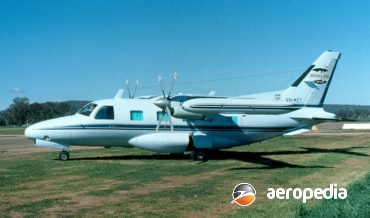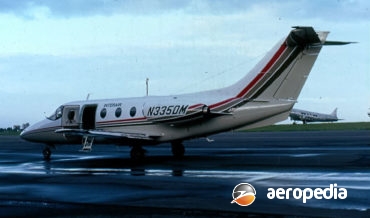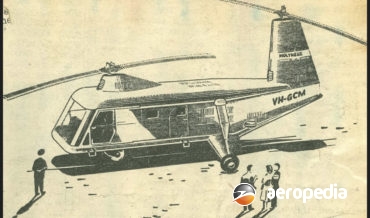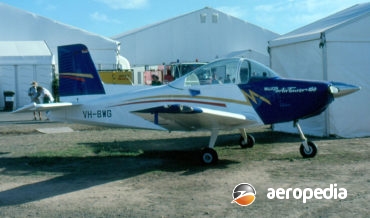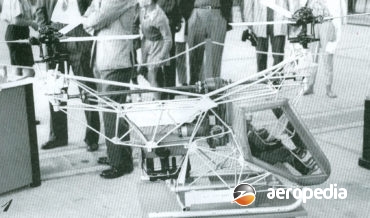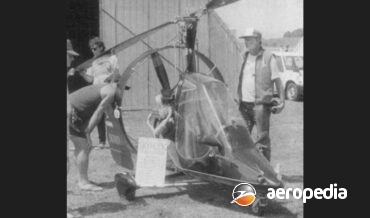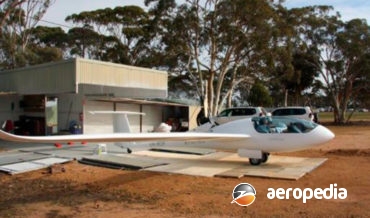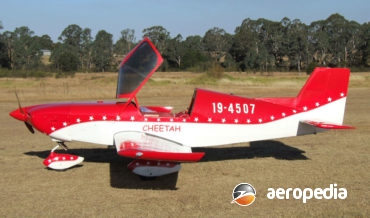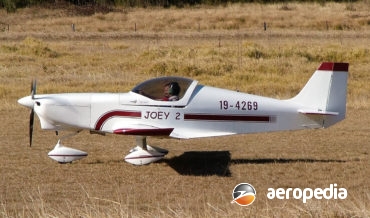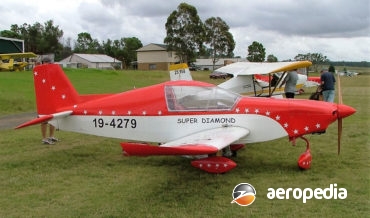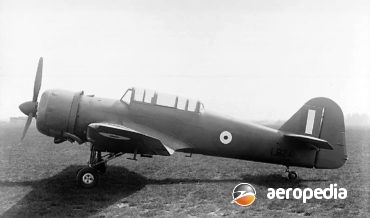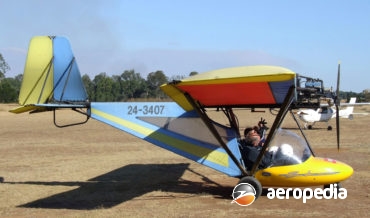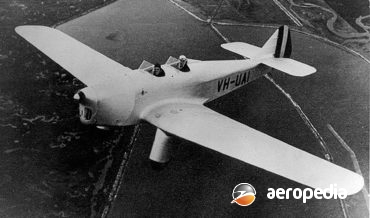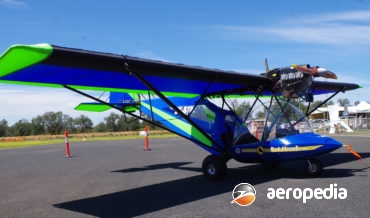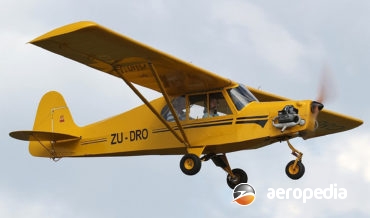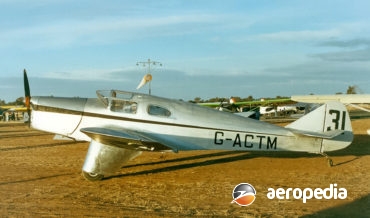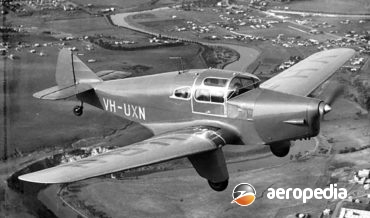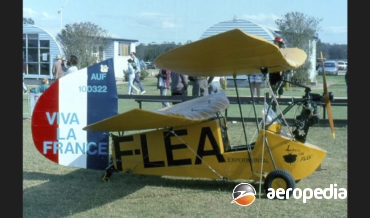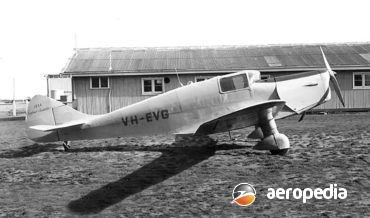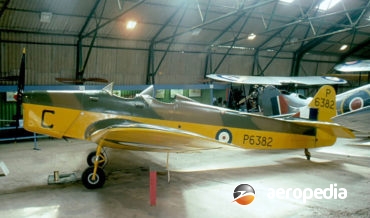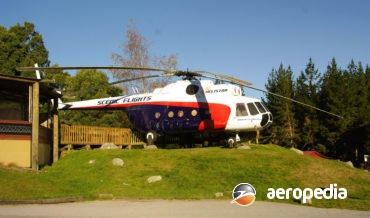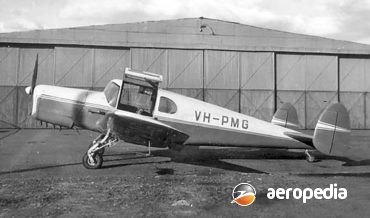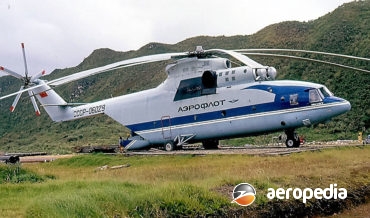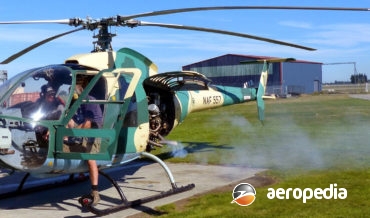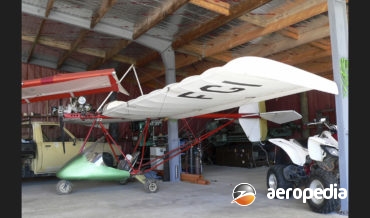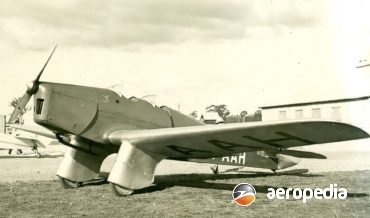All Contents
Contents
The Legal Eagle is an ultralight aircraft designed and marketed initially in the United States by Leonard Milholland and is a high-wing, strut-braced aircraft with a modified Volkswagen engine mounted in the tractor configuration and with a tailwheel undercarriage.
David C. Eyre
- May 8, 2019
The first design of the famous Mitsubishi company to enter production (in notable quantity) after the completion of hostilities in World War II, the MU-2 was designed as a general-purpose light transport which could be used by military operators, as a small airliner, for cargo, or as an executive transport.
David C. Eyre
- May 8, 2019
In 1916 H C “Horrie” Miller, whilst travelling on board a ship from the United Kingdom to Australia, prepared a set of 36 drawings for a light aircraft that he could build, with others, in their spare time.
David C. Eyre
- May 8, 2019
Following the success of the MU-2 series, Mitsubishi in 1977 embarked on the design of a new business jet known as the MU-300, this being a conventional low-wing aircraft with a T-tail powered by two Pratt & Whitney JT-15D turbofans mounted on the rear fuselage
David C. Eyre
- May 8, 2019
In 1952 the Royal Aero Club of Great Britain organised a competition to build a two-seat light trainer for club use and Henry Millicer, Chief Aerodynamicist at the Australian Government Aircraft Factory designed an aircraft and submitted it, being one of 103 entrants, the Australian entry being No 97.
David C. Eyre
- May 8, 2019
Grevor Chilton [known as Bing or George] Molyneux, who was born in 1917 and died in August 2001, was a young aeronautical engineer who held a number of degrees in aeronautical engineering.
David C. Eyre
- May 8, 2019
In the late 1990s Millicer Aircraft Industries obtained rights to build the Airtourer, originally built by Victa at Milperra in Sydney and later built in New Zealand by AESL.
David C. Eyre
- May 8, 2019
The XM-2000 was designed by Grevor Chilton Bing Molyneux, a Melbourne aeronautical engineer, in about 1953 as a two-seat twin-rotor helicopter to prove the subsequent commercial and / or military helicopter known as the XM-1000 which was to be powered by a (550-hp) Pratt and Whitney Wasp engine, was to
David C. Eyre
- May 8, 2019
The Skyhook was a homebuilt gyrocopter designed and built by Ted Minty of Turramurra, NSW in the 1970s, the prototype flying for the first time on 1 January 1878.
David C. Eyre
- May 8, 2019
The Monerai is a glider designed and developed in the United States in the late 1970s and aimed at the home-built market.
David C. Eyre
- May 8, 2019
The Cheetah was designed by Garry Morgan of Miranda Investments as a high-performance light touring monoplane fitted with the Australian designed and built Jabiru 2200-cc engine, though other engines may be installed.
David C. Eyre
- May 8, 2019
The Moni is one of series of designs by John Monnett and marketed by Monnett Experimental Aircraft Inc of Oshkosh, Wisconsin.
David C. Eyre
- May 8, 2019
The Joey series of light sporting monoplanes was designed, developed and built by Garry Morgan of Miranda Investments of Riverwood, NSW.
David C. Eyre
- May 8, 2019
The Super Diamond is a single-seat light sporting aircraft produced in kit form by Miranda Investments of Riverwood, NSW, later becoming Morgan Aero Works of Taree.
David C. Eyre
- May 8, 2019
The Miles Gemini was the last aircraft to be built in quantity by the famous Miles Aircraft Ltd at Woodley.
David C. Eyre
- May 8, 2019
The B-10 commenced life as a hang glider and was developed into a powered ultralight aircraft with good soaring characteristics.
David C. Eyre
- May 8, 2019
To meet RAF requirements for a specialised target-tug, F G Miles designed the M-25 Martinet powered by a 649-kw (870-hp) Bristol Mercury XX or XXX engine, providing accommodation for a pilot and winch operator, the aircraft to carry six flag or sleeve targets which were housed under the centre fuselage,
David C. Eyre
- May 8, 2019
The Mitchell Wing P-38, also known as the Lightning after the World War II fighter, was designed by James Mead and produced in kit form for the amateur aircraft market by the Mitchell Aircraft Corporation.
David C. Eyre
- May 8, 2019
The B-22 Bantam has been produced for some years now by Micro Aviation of Te Kowhai, being developed as a conventional three-axis control ultra-light, the prototype being flown by Keith Trillo in November 1983.
David C. Eyre
- May 8, 2019
The M.2 Hawk was a two-seat, low-wing, cantilever monoplane designed by F G Miles in 1933 and which, like most Miles aircraft, was built in some numbers by Phillips & Powis Ltd in Berkshire.
David C. Eyre
- May 8, 2019
The Micro Aviation Bantam series was designed by Max Clear in New Zealand as a microlight sporting aircraft and was made available as a complete ready-to-fly aircraft that complied with the Federation Aeronautique Internationale microlight rules, as well as the BCAR regulations in the United Kingdom.
David C. Eyre
- May 8, 2019
The Aries was a venture by F G Miles Ltd to improve the Gemini four-seat private aircraft and the prototype first flew in February 1951, being shown at RAF Hendon in July 1951 and later became G-AMDJ (c/n 1002), receiving its Certificate of Airworthiness on 13 June 1952.
David C. Eyre
- May 8, 2019
The MicroWings Cubby and Tri-Cubby were designed and developed in South Africa by Kobus van Staden and Adam Nagorski and the aircraft is basically a 75% scale replica of the Piper J-3 Cub but using modern materials and technology.
David C. Eyre
- May 8, 2019
The Falcon, a development of the M-2F and M-2H Hawk Major, which in turn were developed from the M-2 Hawk, was built to accommodate three persons in an enclosed cabin.
David C. Eyre
- May 8, 2019
Known as the Flying Flea, this series of aircraft was designed by Henri Mignet, the first model built in any numbers being the HM-14 (which see) and was followed by a whole range of variations.
David C. Eyre
- May 8, 2019
The Miles M.4A Merlin was an enlarged development of the Miles M.3 Falcon series designed to accommodate a pilot and four passengers.
David C. Eyre
- May 8, 2019
The Pou Du Ciel, or Sky Louse, also known as the Flying Flea, was designed by French inventor, M Mignet, in 1933 as a light, cheap, easy-to-build-and-fly aircraft for amateur constructors.
David C. Eyre
- May 8, 2019
The M-11 series of light monoplanes was designed by F G Miles to meet a requirement formulated by Mr Whitney Straight, who operated a series of flying clubs in the southern United Kingdom.
David C. Eyre
- May 8, 2019
Societe D’Exploitation De Aeronefs Henry Mignet was set up in France in Saintonge Provence to develop the Mignet series of ultralight aircraft and has developed the HM-1000 Balerit (Balerit - Hawk or Falcon, a small bird of prey) which is a much simpler aircraft to fly but only has two-axis
David C. Eyre
- May 8, 2019
In 1935 Miles produced an improved version of the Miles Hawk Major for aero club use in the United Kingdom and this aircraft, fitted with dual controls, full blind-flying equipment, vacuum-operated flaps, and a Gipsy Major engine, became known as the M-2W Hawk Trainer.
David C. Eyre
- May 8, 2019
The Mi-8/14/17 series of helicopters has been one of the most important families of helicopters operated by countries coming under Soviet influence in the days of the cold war, with some 9,000 examples of the Mi-8 alone being built.
David C. Eyre
- May 8, 2019
The Miles M.28 Mercury was a three/four-seat light touring monoplane of similar configuration to the later M.38 Messenger and, although only a small number were built, no two aircraft were the same and all had different designations.
David C. Eyre
- May 8, 2019
The Mi-26 was designed to replace the Mi-6 and in fact provide between 50% and 100% greater capability, with a hold similar in size to that of a C-130 Hercules.
David C. Eyre
- May 8, 2019
Developed during World War II as a liaison aircraft for the RAF, the prototype of the Miles M-38 Messenger series (U-0223) was flown for the first time on 12 September 1942 at Woodley, UK.
David C. Eyre
- May 8, 2019
The Mil Mi-34 utility helicopter, with the NATO reporting name Hermit, is a light utility helicopter produced by the Mil Helicopter facility in Moscow in either two or four seat configurations.
David C. Eyre
- May 8, 2019
During World War II George Miles designed a light transport for military use, seeing a need for a light transport that could operate into short unprepared strips, particularly in theatres of war such as in Burma.
David C. Eyre
- May 8, 2019
In the early 1980s Mr Maxwell Clear, a New Zealander, travelled to the United States to look for a microlight aircraft to purchase but could not find anything he considered suitable so on returning to New Zealand he formed a group with ten other like-minded aviators and decided to build
David C. Eyre
- May 8, 2019
Following the success of the Miles Hawk series, and due to the limited availability of the Cirrus III engine, Miles decided to redesign the Hawk as the Hawk Major with a Gipsy Major engine, this unit being readily available.
David C. Eyre
- May 8, 2019
The McCulloch J-2 was a two-seat, side-by-side, light autogyro, the prototype of which was flown for the first time in June 1962.
David C. Eyre
- May 8, 2019
The M-9 series was introduced to the Maule range of aircraft in 2003 and was offered with four engine options, one of which is the SMA SR-305 diesel engine providing 172-kw (230-hp), this model, known as the M-9-230 being first shown at the EAA event at Oshkosh in 2007.
David C. Eyre
- May 8, 2019
Recent Comments
Archives
Categories
- No categories
Categories
- No categories
Latest Posts
Newsletter


